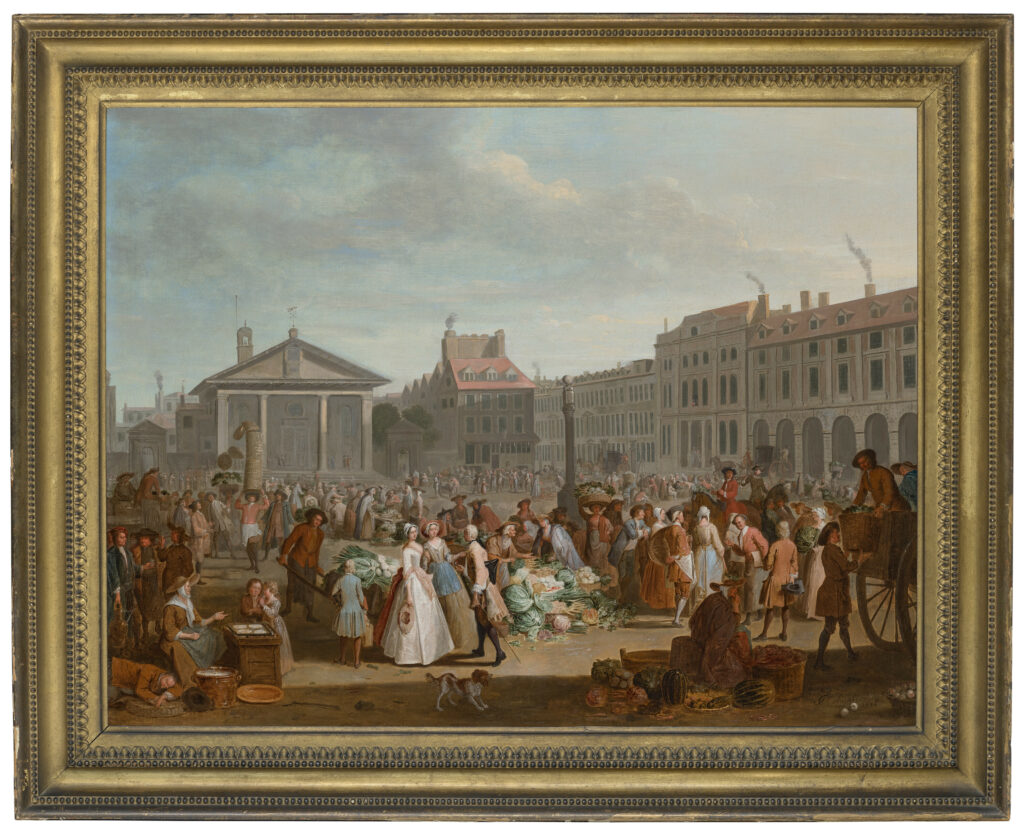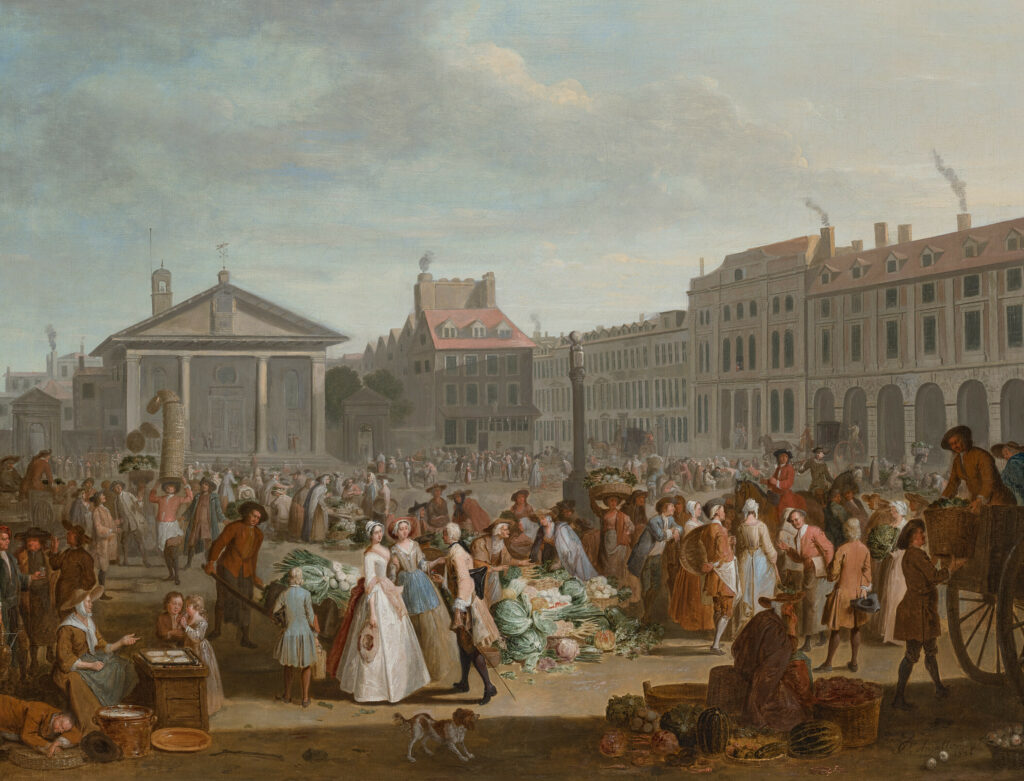Pieter Angellis
1685 - 1731
A View of Covent Garden with Vegetable Market Sellers and elegant Figures, St Paul’s Church and the Arcades in the Background


Medium:
Oil on Canvas
Category:
Dimensions:
81(h) x 106.7(w) cms
Framed Dimensions:
102(h) x 127(w) cms
Signed:
signed and dated bottom right: 'P: Angellis. / 1726'
Essay:
Pieter Angellis began his career in his hometown of Dunkirk, although we do not know who his teacher was. Eventually he moved to Antwerp where he was elected a member of the Guild of St. Luke in 1715. In 1719 he travelled to London, living there until 1728. Here his reputation and his confidence blossomed. He specialised in small landscape subjects with staffage much in the style of Teniers and Watteau, who undoubtedly influenced him. He was in Rome for three years from 1728 and finally Rennes where he spent the last years of his life.
Horace Walpole wrote of him: "His manner was a mixture of Teniers and Watteau, with more grace than the former, more nature than the latter. His pencil was easy, bright, and flowing, but his colouring too faint and nerveless. He afterwards adopted the habits of Rubens and Vandyck, more picturesque indeed, but not so proper to improve his productions in what their chief beauty consisted, familiar life."
In Angellis's painting of Covent Garden the viewer is treated to the clamour and bustle of the busiest marketplace in 18th century London. In 1670 the owner of the public square the 5th Earl of Bedford formally turned Inigo Jones's piazza into a market. The market was expressly for the purpose of selling fruit, flowers, roots and herbs every day of the week save Sunday and Christmas Day. Covent Garden was born and grew rapidly from a smattering of street sellers into a thriving market.
The market was not only a place for buying and selling vegetables, but the beating heart of London's theatre and artistic scene. The only two theatres in London allowed to perform spoken drama were a stone's throw away from Covent Garden. Meanwhile, many artists made their homes in and around the market. Angelis himself is recorded by Vertue as having lived in Covent Garden in 1726 (The Walpole Society, XXII, 1933-34, p. 30).
Angellis painted this view on a number of occasions, including another version on copper in the Paul Mellon Center, Yale. The seedy night-time side of Covent Garden - made infamous by Hogarth and other satirists - is absent in Angellis's depiction. He draws on the tradition of Dutch and Flemish scenes of cheery vegetable sellers, as well as Marcellus Laroon's print series 'The Cries of London' where the manner and appearance of street sellers is so carefully recorded.
Angellis shows more than just market stalls and reveals to the viewer a vibrant cross-section of London life with the hustle and bustle of the daily goings-on. We see an old woman frying pancakes and serving them to two children. Behind her is a man selling gin from a jug while a customer of his blissfully sleeps on the ground. A basket seller's wares are toppling off his head and in the background a knife-grinder plies his trade. To the right a trumpeter announces a well-dressed man who may be a politician angling for votes, and in the foreground a young dandy offers a flower to two women.
The view of Covent Garden is taken from the South-East of the piazza, the Russell Street end, looking West towards Inigo Jones's church of St. Paul's, completed in 1633, with Henrietta Street to the left and King Street to the right. The doric column and sundial surmounted by a sphere was erected in the centre of the piazza in 1668-9, but was later demolished in 1790. To the right, the Northern side of the square is bordered by Lord Archer's house and the arches of the great piazza, while the Southern side is lined with fruit and vegetable stalls.
Provenance:
Collection of William R. Pettigrew, London;
Acquired from the above by Knoedler, New York, 9 July 1923, (for £130),
Sold by the above to Kenneth Wilson, London, 12 Nov 1923, (for £250),
Acquired from the above by Knoedler, New York, ? Feb 1924, (for £200),
Sold by the above to Walter H. Samuel, 2nd Viscount Bearsted (1882 - 1948), Upton House, Warwickshire, 14 April 1924, (for $585).
Private Collection, UK.